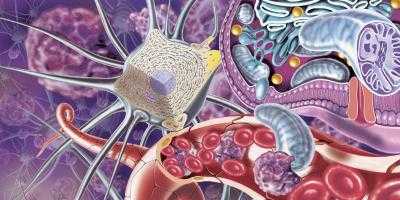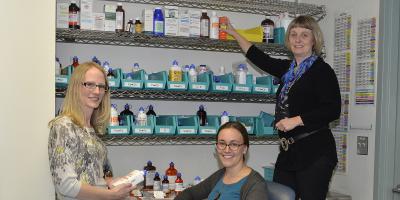Operation Honduras: They volunteer by providing eye surgery

(From left) Syracuse ophthalmologists Thomas Bersani, MD, and Robert Weisenthal, MD, with their Honduran colleagues Drs. Alicia Ponce and Luis Danilo in from of a portrait of the clinic's founder, Luis Alberto Ponce.
Along with colleagues, Thomas Bersani, MD, and Robert Weisenthal, MD, put in long days providing a variety of free eye surgeries to Hondurans in need.

A 15-year-old boy, shortly after surgery to treat bilateral cataracts.
For the first 10 years, Bersani and Weisenthal connected with and befriended a local ophthalmologist who could provide follow-up care to their surgical patients. That man died. Today his daughter and son-in-law are in practice, and they have a son who is training to become an ophthalmologist. Bersani and Weisenthal expect they will soon work with the third generation of the Ponce family.
They have a triage system to quickly determine if a patient can be helped, and whether he or she can benefit from a surgery they can provide.
Using donated equipment and supplies, Bersani and Weisenthal volunteer their time for the trips. They are usually accompanied by 18 to 22 medical volunteers, and they said other doctors – including ophthalmologists Walter Merriam, MD, Evis Petrela, MD, and Lawrence Stewart, MD – “have been really instrumental in making these missions work.” Their nonprofit, Honduran Eye and Life Program, or HELP, accepts contributions year round.
The group was invited to borrow space in a private hospital that would normally be off limits to their patients. “It‘s a little bit dated, but it‘s not too far behind what we have in the U.S.,” Bersani said. “We slowly have brought down equipment and left it there over the years, and we now have a pretty good physical setup with clinic space and operating-room space. It makes it quite functional.”
During a week this past April, Bersani and Weisenthal performed 65 operations. Among their patients was a 9-year-old boy who had not seen because of cataracts he developed in both eyes when he was 1 or 2 years old. Everyone at the clinic paused to watch his excited reaction when the bandages came off the next day.
“Although it‘s very arduous,” Weisenthal said of the Honduran trips, “you get back much more than you give.”

 Hear a radio interview about the Honduran Eye and Life Program. This article appears in the fall 2015 issue of Upstate Health magazine.
Hear a radio interview about the Honduran Eye and Life Program. This article appears in the fall 2015 issue of Upstate Health magazine.



